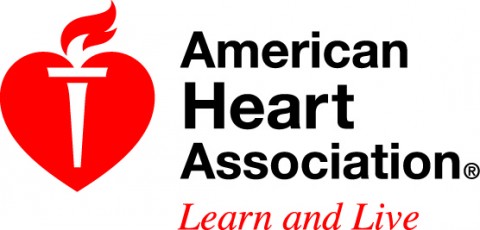American Heart Association Meeting Report
 Phoenix, AZ – Workers age 45 and older in sales, office-support or service occupations appear to have more risk factors for heart disease and stroke than workers in management or professional jobs, according to research presented at the American Heart Association’s Epidemiology/Lifestyle 2016 meeting.
Phoenix, AZ – Workers age 45 and older in sales, office-support or service occupations appear to have more risk factors for heart disease and stroke than workers in management or professional jobs, according to research presented at the American Heart Association’s Epidemiology/Lifestyle 2016 meeting.

The study involved 5,566 employed men and women, black or white, who did not have a history of heart disease or stroke at the beginning of the study.
It found
• Transportation/material moving workers: Nearly one-quarter (22 percent) were smokers, the highest smoking rate among the occupation groups included in the study.
• Sales, office and administrative support employees: Sixty-eight percent had poor eating habits and 69 percent of sales employees did not have ideal total cholesterol and 82 percent of office and administrative support workers did not have ideal scores for physical activity.
• Food preparation and serving employees: This group of workers had the worst diet profile, with more than three-quarters (79 percent) having poor diet quality.
• Protective service workers: Ninety percent of police, firefighters, and their peers were likely to be overweight or obese; 77 percent did not have ideal total cholesterol levels; and 35 percent had high blood pressure.
• Management/professionals: Overall, this category of worker had better cardiovascular health than the other categories – one-third had ideal body mass, 75 percent were at least moderately active, and just 6 percent were smokers. However, 72 percent of white-collar professionals employed in business and finance workers had poor eating habits.
To assess worker health, the researchers examined seven modifiable risk factors derived from the American Heart Association’s “Life’s Simple 7,” an action plan for reducing heart disease and stroke risk. Participants’ health in each of the areas was scored as “ideal,” “intermediate” or “poor.”
Workers earned ideal scores if, without medicines, their blood pressure readings were lower than 120/80 mm Hg; total cholesterol was below 200 mg/dL; and/or blood glucose was lower than 100 mg/dL while fasting or 140 without fasting. Besides non-smoking status, a body mass index (BMI) below 25 and engaging in intense, break-a-sweat activity four or more times a week, including at work, were also judged ideal.
But among the study’s group of older workers, it was difficult to achieve ideal levels for all seven risk factors. In fact, no one did, largely because of the difficulty achieving an ideal diet, she said.
Workers’ diets earned the top mark if they met at least four of five goals: consuming 4.5 or more cups of fruits or vegetables daily, 3.5 ounces of fish at least twice a week, less than 1,500 milligrams of sodium a day, 450 or fewer calories a week in sugary foods, and three or more servings (each equivalent to one ounce) of whole grains daily.
“Older U.S. workers are not destined by age to have a poor cardiovascular health profile,” MacDonald said, “but some workers have more barriers to achieving ideal levels than others.”
Work conditions such as long work hours and low job control have been linked in prior research to metabolic and behavioral risk factors, which may contribute to the group differences found in the study. For example, inflexible work schedules or workplace demands can make it hard to find time to exercise, or shop for and prepare healthy foods. Job stress may also deplete workers’ resolve to prioritize their health, she said.
Still, improving cardiovascular health is possible.
“It’s important to take small steps and not get overwhelmed or discouraged,” MacDonald said. Such small steps could include using lunch breaks to go for a walk rather than working through lunch, parking farther away from destinations, or taking the stairs instead of the elevator. Over time, she said, small steps accumulate into improved health.
The participating workers were part of a broader project, the Reasons for Geographic and Racial Differences in Stroke (REGARDS) study, which includes more than 30,000 people.
The scientists also tested whether two factors related to occupation — income and education — might underlie the group-to-group variation.
Co-authors are Stephen Bertke, Ph.D.; Misty J. Hein, Ph.D.; Suzanne Judd, Ph.D.; Sherry Baron, M.D., M.P.H.; Robert Merritt, M.A.; and Virginia J. Howard, Ph.D. Author disclosures are on the manuscript.
This study was supported by the National Institute for Occupational Safety and Health, CDC; and the National Institute of Neurological Disorders and Stroke, NIH.



